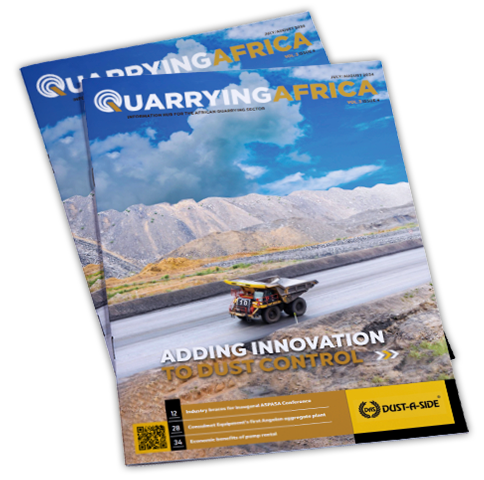After its international introduction in 2013, the UD Quester was launched in Southern Africa in March 2015. At the time, UD Trucks Southern Africa stated that the extra heavy truck range was specifically aimed at growing the Japanese manufacturer’s market share in developing markets – a feat well achieved to date. In fact, the company noted that the Quester range was the first in a new generation of UD Trucks specifically developed for growth markets across the world, including the “unique African market”.
To date, the Quester range is available in about 20 variants in Southern Africa, including truck tractors, rigids, freight carriers, compactors and specific construction focused derivatives such as tippers and mixers. The arrival of the range also allowed UD Trucks Southern Africa to offer 8×4 model options for the first time.
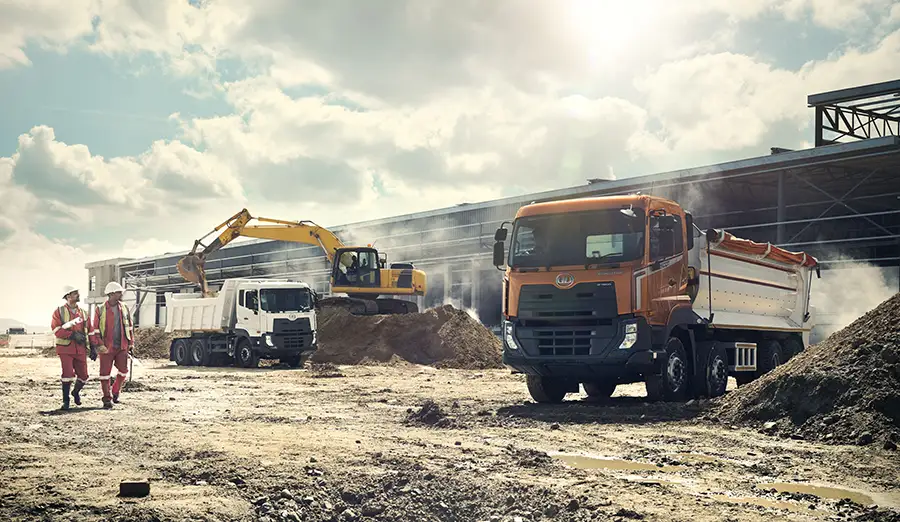
Performance
Since its launch, the Quester model has done well across the two product groups that it caters for. The first, says Schulz, is the regional and long-haul segment, which basically entails the high-horsepower truck tractors and freight carriers.
“Initially, we had a slow start in terms of our performance in the regional and long-haul segment with the Quester,” says Schulz. “This was mainly because we only had a manual transmission for the segment. We subsequently introduced the automated transmission (AMT) option, which allowed us to compete strongly in the truck tractor market. That correction in our product offering ushered in a new era in the success of the Quester in this market segment.”
The second segment, which Schulz divides into two sub-segments, includes public utilities and construction/quarrying. In the public utilities space, he says, the Quester is one of the strongest performers in the compactor market, supporting public utilities such as municipalities and government operations. From the onset, UD Trucks Southern Africa offered a fully automatic Alisson transmission, which is ideal for the stop/start nature of the compactor application.
The truck has also amassed significant market share in the construction segment. “Once again, we were among the first to introduce a fully automatic transmission in that application,” he says. “An extra edge is the fact that, from the outset, we were able to introduce 8×4 model options into this market segment, which are utilised as tippers, concrete mixers and concrete pumps.”
The range has done exceptionally well at the light end of the construction market – in the typical 6×4, 330 hp, 10 m³ tipper market.
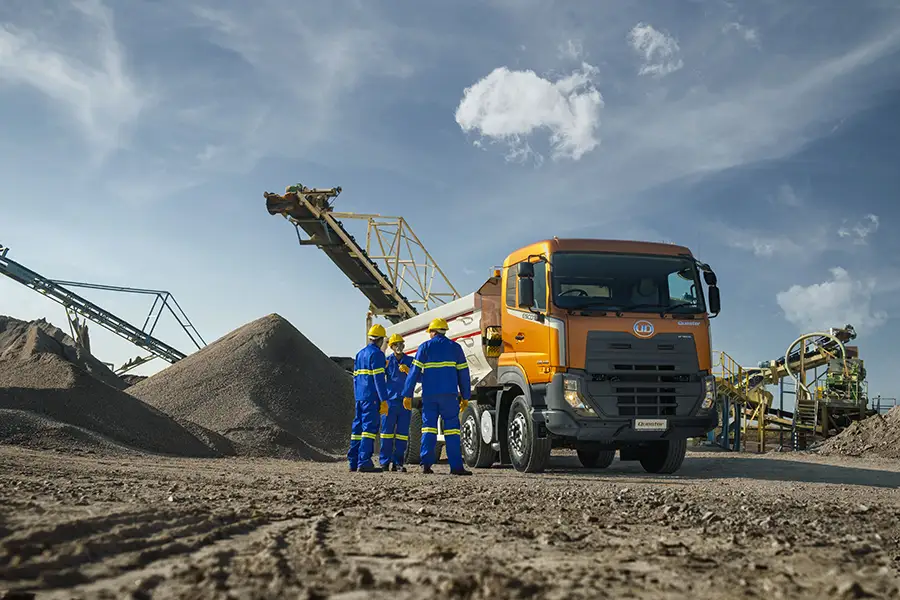
Into new terrain
One of the growing trends in the quarrying/mining value chain is the move towards construction type tippers, better known as mining tippers, for arduous in-pit applications, allowing cost-conscious operators to switch from traditional yellow metal haulers where possible.
Traditionally, tipper trucks have been excluded from so-called arduous applications such as hauling run-of-mine material from the quarry face to the processing plants, where yellow metal haulers, mostly articulated dump trucks (ADTs) and rigid dump trucks (RDTs), have always been preferred.
However, passing through immense innovative technological modifications, tipper trucks are now offering cost-effective haulage solutions to mining and quarrying markets. The new models of tipper trucks have been reengineered completely to their core. They come with better ground clearance, allowing them to operate well on uneven work sites.
In line with this trend, UD Trucks Southern Africa recently completed a testing programme for its Quester-based mining tipper. “In recent years we have had a couple of requests for an alternative to yellow metal haulers. We have therefore successfully developed and tested a mining tipper in a limestone operation in the Lichtenburg area,” he says.
Based on the successful results from the testing programme, the mining tipper – an upgraded Quester 8×4, 440 hp C-Model – is now commercially available to the local market. The truck has been upgraded with all the necessary heavy-duty componentry, allowing it to operate at close to 60-tonne (t) payload in off-road conditions, a significant increase to the standard 45-t payload.

Key upgrades
Over the past decade, the Quester has benefitted from what Schulz refers to as two major upgrades. The first phase, he says, was the introduction of the AMT transmission for the regional and long-haul applications.
The introduction of the ESCOT transmission on the Quester took away the drivers’ need to shift an average of 1 000-1 500 times a day by automatically selecting the right gear at any given time. This leads to less stress and improved safety by allowing the driver to focus more on the road. Combined with lighter tare weight and optimised driveline, the ESCOT transmission offered up to 10% improvement in fuel economy compared with the manual Quester model.
The second phase, he adds, was the introduction of the Euro 5 option in 2019. “The launch of the Euro 5 marked one of the significant milestones in the evolution of the Quester. While it has not been a dominant volume driver for us yet, predominantly due to the lack of legislation, we see great interest in the product as local customers, particularly blue-chip companies, seek to drive their sustainability agendas,” says Schulz.
The Euro 5 launch bolstered UD Trucks’ Better Life purpose – to be better for the planet, people and growth. Better Life drives the integration of sustainability across all of the company’s operations and processes to realise lower environmental impact, higher customer satisfaction, higher profitability, and a better place for people to work and live.
As one of the first truck manufacturers to introduce Selective Catalytic Reduction (SCR) technology in 2004, UD Trucks’ new Euro 5 range features SCR technology to significantly boost environmental protection and fuel economy. With these benefits, SCR technology is proven to be more reliable when compared to other emission control technologies for reducing NOx emissions.

Focus on TCO
The construction/quarrying market is generally regarded as a cost-conscious market, and operators in these segments often base their vehicle selection on parameters such as fuel economy and total cost of ownership (TCO) at large. The TCO drive, says Schulz, has been one of the catalysts to UD Trucks’ strategy change from only selling trucks to providing total transport solutions.
Reducing fuel consumption, which constitutes the largest operating expense, representing about 60% of total operating costs of a vehicle, remains a top priority in the quest for reduced TCO. With the Euro 5 offering on the Quester, for example, UD Trucks has improved the truck’s fuel efficiency through the higher power and torque without increasing the size of the engine – this is made possible by the optimised combustion.
Apart from a Euro 5 system with SCR technology, the upgraded Quester also features a new instrument cluster with real-time fuel coaching. This enhancement provides drivers with immediate and specific feedback on driving techniques that are more fuel-efficient.
“Quester’s built-in fuel coaching system constantly monitors the performance of the drivers in real time. This system keeps drivers informed of the truck’s fuel consumption and whether they are driving at the optimum speed and gear which ensure the best economy. Fuel Coach is also able to advise the driver which corrective action to take to get back into the so-called ‘sweet spot’ of performance,” he says.
The second important parameter in lowering TCO, he says, is maintenance. The lower maintenance requirements on Euro 5 engines, for example, reduce operational costs. In addition, UD Trucks Southern Africa now offers service agreements (maintenance contracts), affording customers best practice maintenance of assets in order to ensure optimal performance throughout their lifecycle. Service agreements also ensure reduced capital outlay of critical components and consumables as well as reduced repair and breakdown costs ensuring the customer more uptime.
In addition, UD Trucks Southern Africa now offers UD Trucks Connected Services as standard across all models, including the Quester. The system allows fleet owners to maximise efficiency with real-time vehicle tracking and geofencing. The service is free for one year from date of purchase, whereby fleet owners have the option to renew the contract.
“Connected Services plays an increasingly important role in the ever-changing transport environment,” states Schulz. “It empowers fleet owners to streamline their operations, getting the most out of their investment while delivering added value, including enhanced turnaround times, to their customers.”
UD Trucks’ Connected Services system basically monitors the heartbeat of the truck as it provides real-time positioning, information on preventative maintenance and manages the breakdown assistance. This also provides fleet owners and UD Trucks dealers with all the information they need to do the required preventative maintenance on time, and to schedule standard services more efficiently.
To help customers further optimise their TCO, UD Trucks Southern Africa has established a Used Trucks division, which helps fleet owners get a good residual value for their assets at the end of their preferred operating cycles.
Trends
Commenting on new trends in the market, Schulz points out the accelerated pace at which automation, connectivity and electromobility (ACE) are gaining momentum. True to UD Trucks’ vision to ‘provide the trucks the world needs today’, the Japanese truck maker’s innovation roadmap takes a step-by-step approach together with customers to offer commercialised solutions for select automation and electromobility applications from 2020, with a view toward full-fledged commercialisation by 2030.
“From an automation point of view, the fixed operating environments such as construction, quarrying and agriculture lend themselves to full automation because of the repetitive nature of the work and ease of control than in a typical road setup. In Japan, UD Trucks is already running an autonomous prototype truck, alternating between a mining/quarrying type of application and an agricultural environment. Should we bring a prototype locally, we will also target construction and mining/quarrying environments for testing,” concludes Schulz.
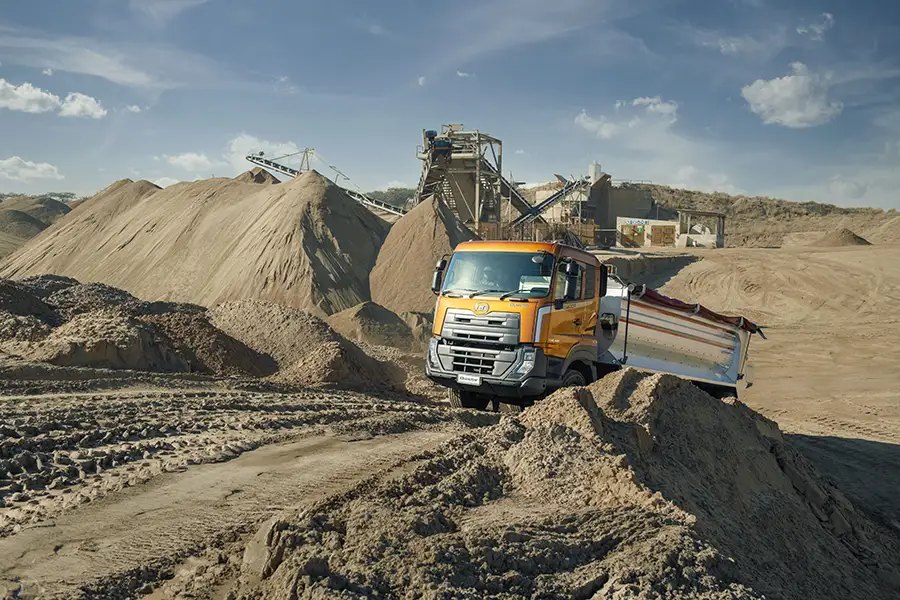
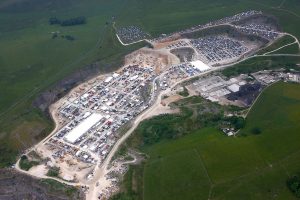
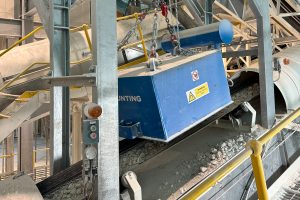


![Data from the World Risk Poll shows that one in five (21%) people in mining and quarrying occupations have experienced harm at work in the past two years. [Photo by Shane McLendon on Unsplash]](https://quarryingafrica.com/wp-content/uploads/2024/10/shane-mclendon-89hUOLtVfoI-unsplash-300x225.jpg)
